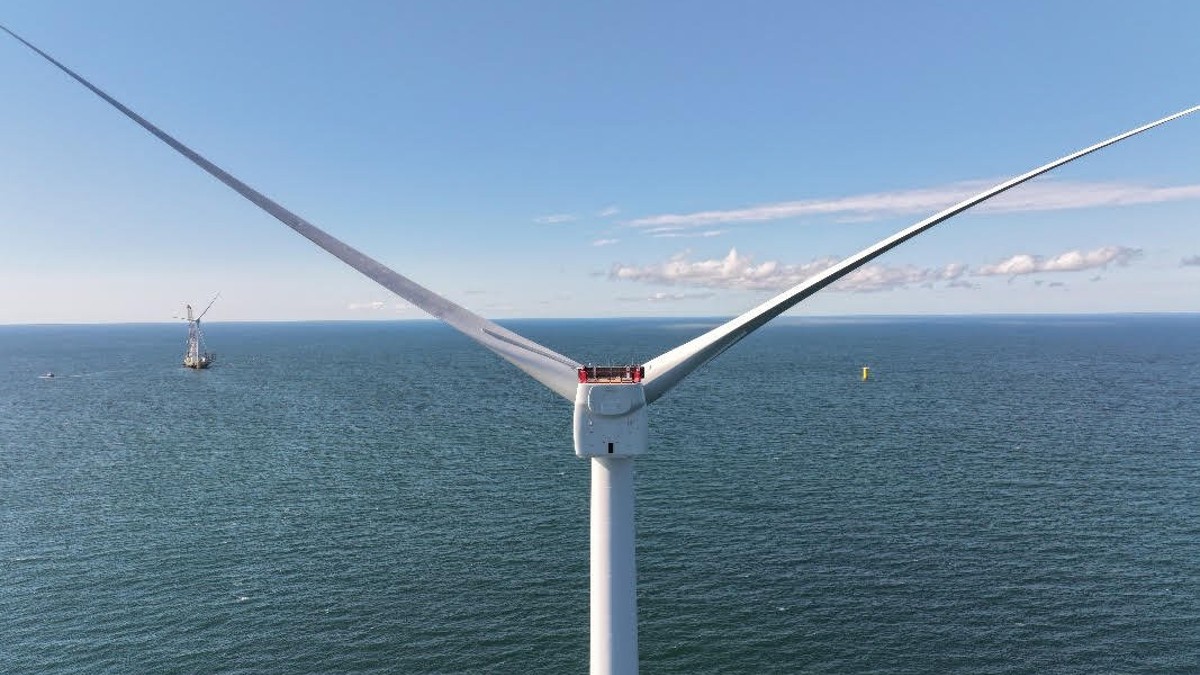
In another US offshore wind milestone, the first five turbines at Vineyard Wind 1 in Massachusetts have powered up.
The five 13-megawatt (MW) offshore wind turbines are now delivering around 65 megawatt hours (MWh) of clean energy to the New England grid, enough to power 30,000 homes and businesses in Massachusetts.
“This marks a turning point in the clean energy transition. After many decades of advocacy, research, policymaking, and finally construction, America’s offshore wind industry has gone from a dream to reality,” said Governor Maura Healey (D-MA).
On January 2, Vineyard Wind 1’s first wind turbine delivered around 5 megawatts (MW) of electricity to the grid on January 2.
Nine turbines are installed, and the 10th is underway. The 11th turbine is about to be transported to the offshore site.
Each GE Haliade-X turbine has a 220-meter (722-foot) rotor, 107-meter (351-foot) blades, and is 248 meters (814 feet) tall. Each is capable of providing power to more than 6,000 homes and businesses.
When completed, the 806 MW Vineyard Wind 1 will have 62 turbines that will generate electricity for more than 400,000 homes and businesses and save customers $1.4 billion over the first 20 years of operation. It’s expected to reduce carbon emissions by more than 1.6 million metric tons per year, the equivalent of taking 325,000 cars off the road annually.
The $3.5 billion Vineyard Wind 1 is 15 miles south of Martha’s Vineyard and Nantucket and 35 miles from mainland Massachusetts. It’s a joint venture of Avangrid and Copenhagen Infrastructure Partners through its affiliate Vineyard Offshore.
It’s expected to reach its full power potential by mid-2024.
Read more: This US offshore wind farm is piloting a bubble curtain – what it is and why it’s cool
To limit power outages and make your home more resilient, consider going solar with a battery storage system. In order to find a trusted, reliable solar installer near you that offers competitive pricing, check out EnergySage, a free service that makes it easy for you to go solar. They have hundreds of pre-vetted solar installers competing for your business, ensuring you get high quality solutions and save 20-30% compared to going it alone. Plus, it’s free to use and you won’t get sales calls until you select an installer and you share your phone number with them.
Your personalized solar quotes are easy to compare online and you’ll get access to unbiased Energy Advisers to help you every step of the way. Get started here. – ad*
FTC: We use income earning auto affiliate links. More.



Comments